Thinking about how to create a Charlotte Mason Schedule can feel daunting to today’s modern family. There are so many wonderful subjects. How do we fit them all in?! As I am mentally shifting from our wonderful summer and into planning for our upcoming year, I’d like to share how we are using a Charlotte Mason timetable this year.
As an Amazon Associate I earn from qualifying purchases.
This is something I have been navigating for nearly 7 years in some form or another during our homeschool journey. We have started with Classical Conversations and shortly after I learned about the CM philosophy. I tried to blend the two our second year but it felt very off and unsynchronized. We then tried some CM inspired boxed curriculum but those fell short and felt more like traditional school. Without an understanding of the principles, nothing was going to click right. So, I dove into the Charlotte Mason volumes and began really understand the application of the philosophy.
Read here for What You Need for a Charlotte Mason Education
Last year we fully committed to executing the Charlotte Mason philosophy, and it was a beautiful year. There were things we did really well, and there were some things that I sort of dropped the ball on. But hey, we are growing! As I plan for this upcoming year, I know that a schedule will be my friend and will serve our boys much better than continuing without one.
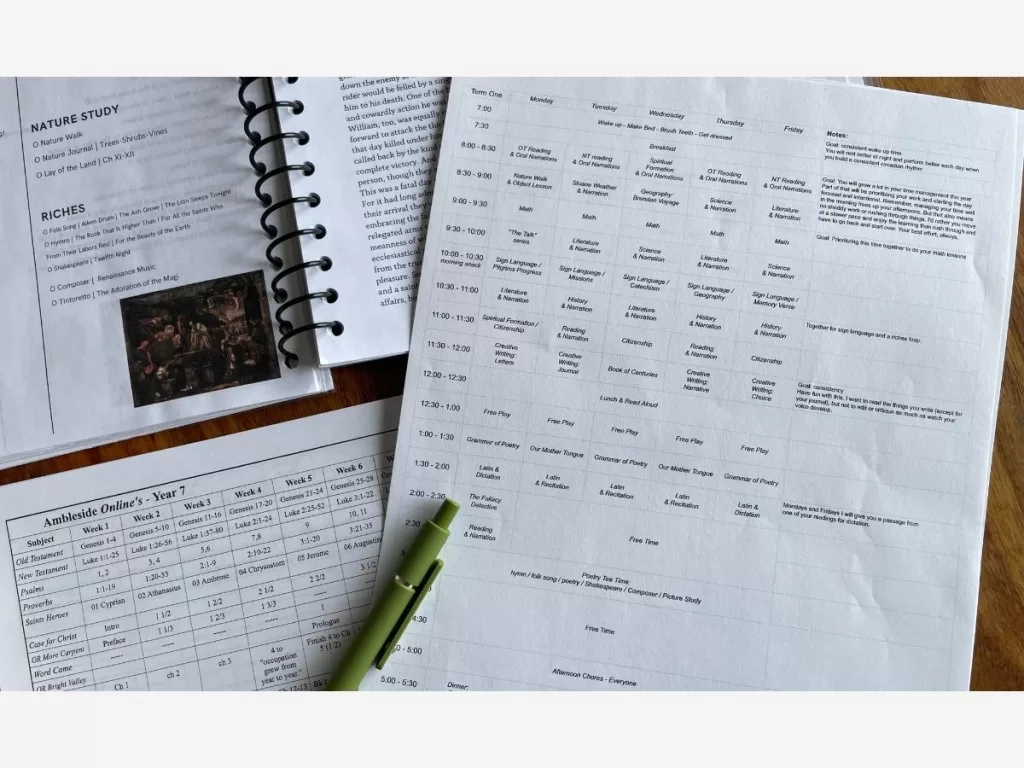
How Do You Create a Charlotte Mason Schedule?
Also referred to as a timetable in Charlotte Mason circles, it comes with a few distinct features to keep in mind as you make your schedule. Remember that the lessons are short. Fifteen to twenty minutes in the early years, twenty to thirty minutes in the middle school years, and thirty to 40 minutes (in some subjects) in the upper/high school years.
Another feature to remember is varying your subjects. I am prone to wanting to knock out all the tough subjects first things and save all of the riches for the afternoon. Rather, we should be breaking up the tough subjects by transitioning in and out of the rich variety offered in a Charlotte Mason education.
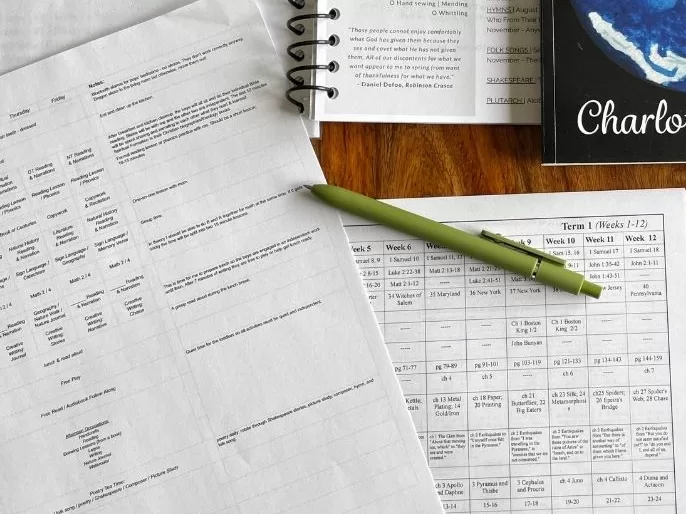
Lastly, consider the ability of each student in their independence. You spend the early years often reading to the child, but Charlotte Mason encouraged that the student was reading for himself by year four. Now there are situations that would require modifying that threshold, but in general that makes a good rule of thumb.
What Do I Need to Include in Our Schedule?
As I mentioned above, one of the big draws of a Charlotte Mason Education is the variety of subjects. But this question is first answered by how you select your curriculum, or living books. We use AmblesideOnline.org. There are a few others to choose from such as A Gentle Feast or the CMEC, but I cannot speak to those as I don’t have any familiarity with them at all.
We love Ambleside for its affordability (a free curriculum with links to many free audio and print versions of the living books) and the selection of living books). The women that have faithfully crafted and maintained this curriculum are incredible and offer so much community through the forum. There is also a wonderful community on Facebook with more resources and help in navigating the philosophy in your own homeschool.
With that being said, you also need to consider what your state requires of your home education. Some states want specific subjects covered while other states are completely hands off. Beyond that, you start with the curriculum list.
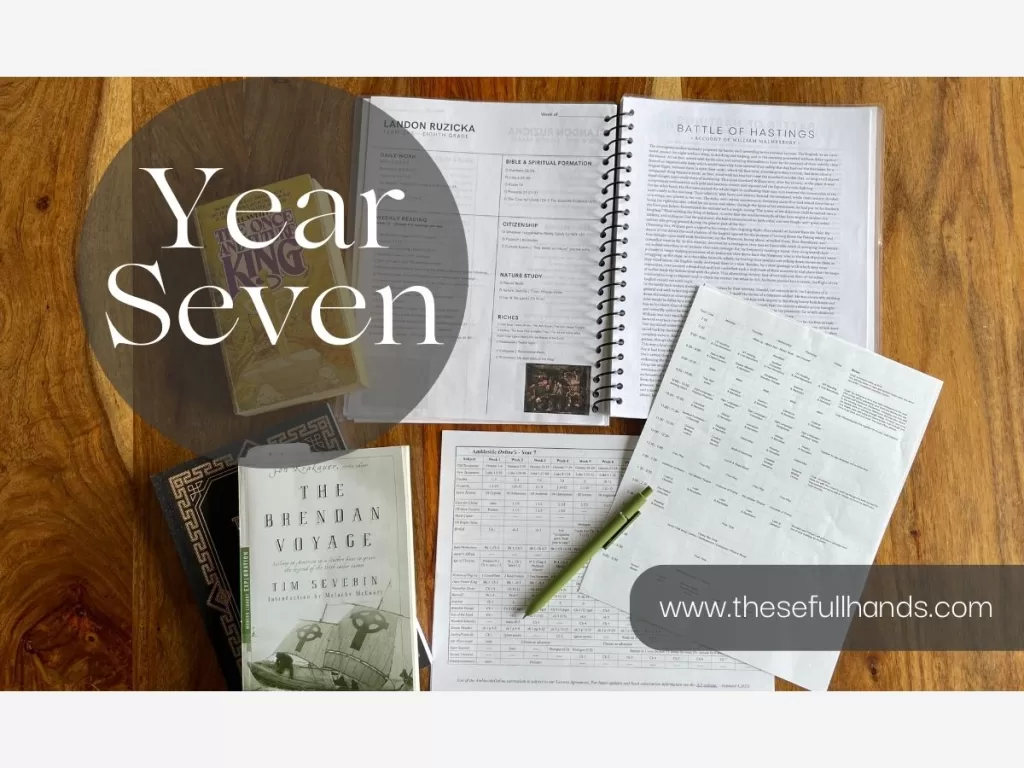
For example, some of the subjects we cover are the traditional “core subjects” like history, science, language arts, math, and reading. Then we also include Bible, geography, foreign language, composer study, picture study, art, drawing, handcrafts, poetry, map drills, nature study, life skills, hymns, and folk songs.
There may be other things you want your kids to learn that aren’t included specifically in your selected curriculum. Without overloading the schedule you could probably easily incorporate it into a loop. With all of those considerations you are now ready to create your own Charlotte Mason Schedule.
Laying Out Your Charlotte Mason Schedule
To begin with, you need to consider the events in your week and in your day that are pretty concrete. Meals, lessons, nap times, appointments, and anything else that may pull you out of the home or not have you available for lessons. By using Google Sheets or Microsoft Excel you can create a column of your time slots. I used 30 minute increments to build a little margin around the lesson times of our Y1 and Y4 children. Running a home daycare I also need to allow for diaper changes and setting up play invitations for them as well.
Then across the top of your spreadsheet you label the days of the week. In previous years we did 4-day school weeks, but this year we will be using all 5 days to spread the feast.
Once you have the blocks labeled, begin plugging in your “concrete” schedule items. Remember to consider drive times and the need for you to actually cook or set out a meal or snack.

Adding in Your Subjects
Now that you have the consistent events in your timetable you can begin adding your subjects. You could create a master Charlotte Mason schedule, but I found that challenging in the sense that my Y1, Y4, and Y7 all have different needs from me. For instance our Y7 is mostly independent, but we still do math together and some of his subjects are intended for parent involvement. I need to be intentional with those times to make sure I am available to him.

Our Y4 will be doing a lot more on his own this year. By him reading on his own or following along with an audio version, I can use those times to be doing a reading or lesson with our Y1 son. Also, when I am working one-on-one with one child, another can be playing and helping with our tots. Then we all come together a few times throughout the day to enjoy some subjects together.
A Look at Our Charlotte Mason Schedule
Since I know that I understand things better when I can see them visually I’d like to share our timetable with you. There is a caveat though. I am not a CM purist, and this is not set in stone. This is how I see things working for our year on the front end. Once we begin our lessons I may need to make some adjustments and swaps. This is also with just our first term in mind. Things like sports and out-of-the-home things will change in our second and third term.
The schedule serves the family; the family doesn’t serve the schedule.
I created our Charlotte Mason Schedules to work like this…
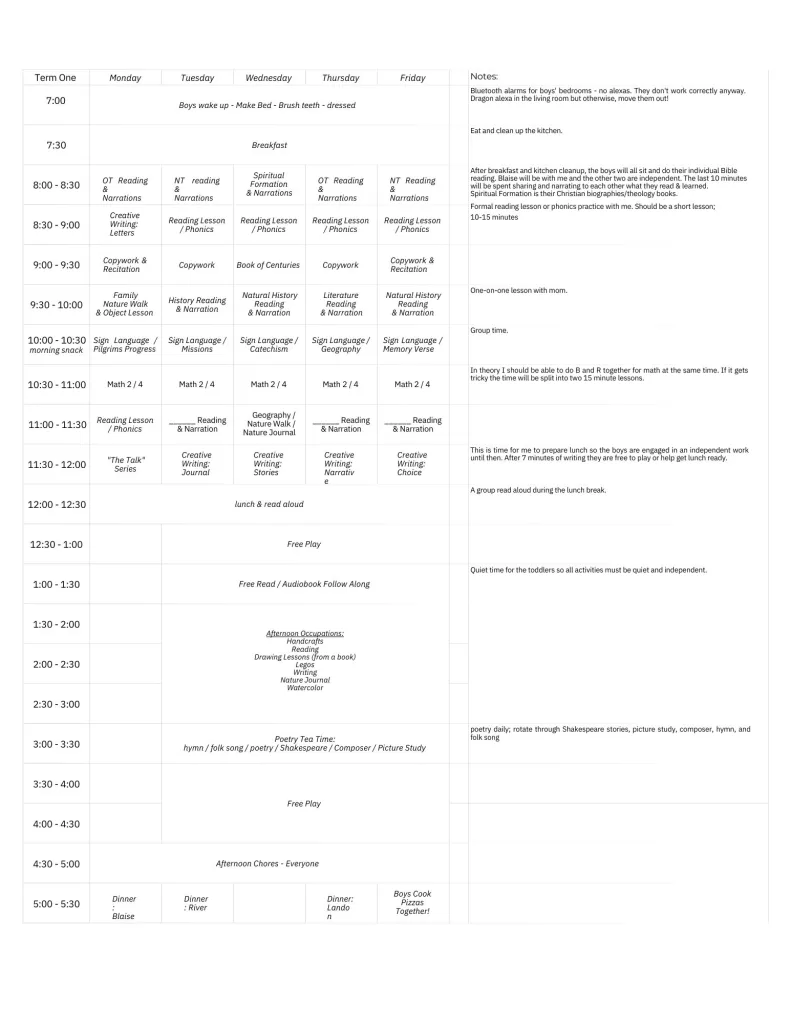
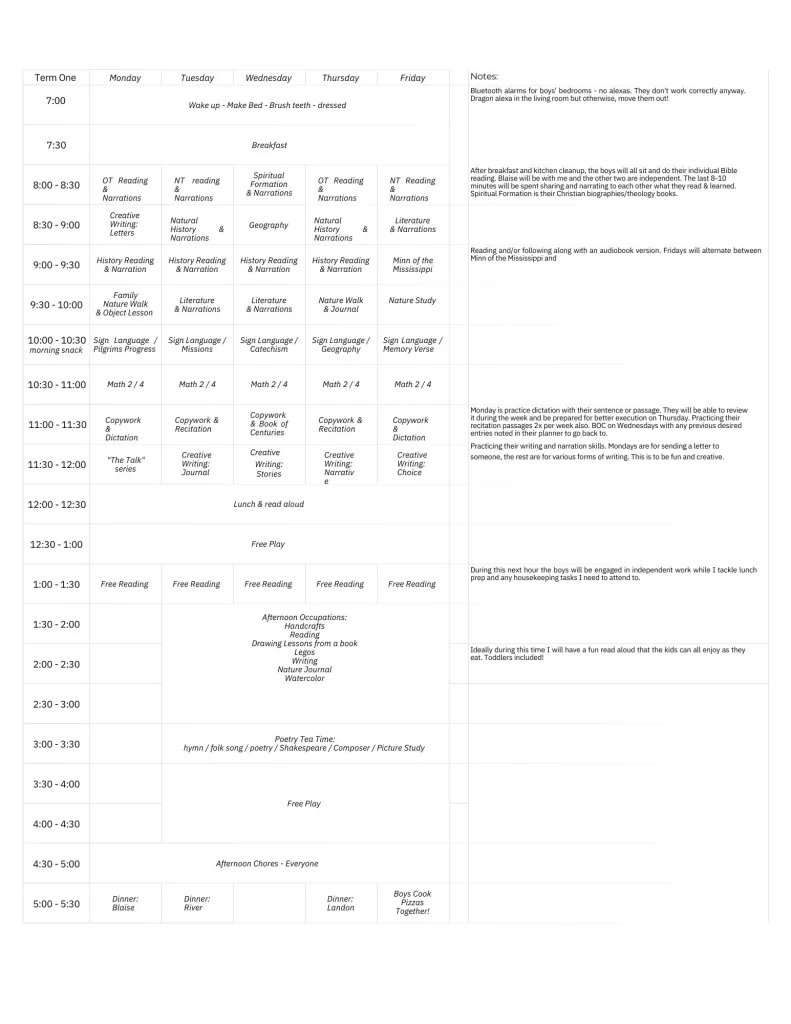
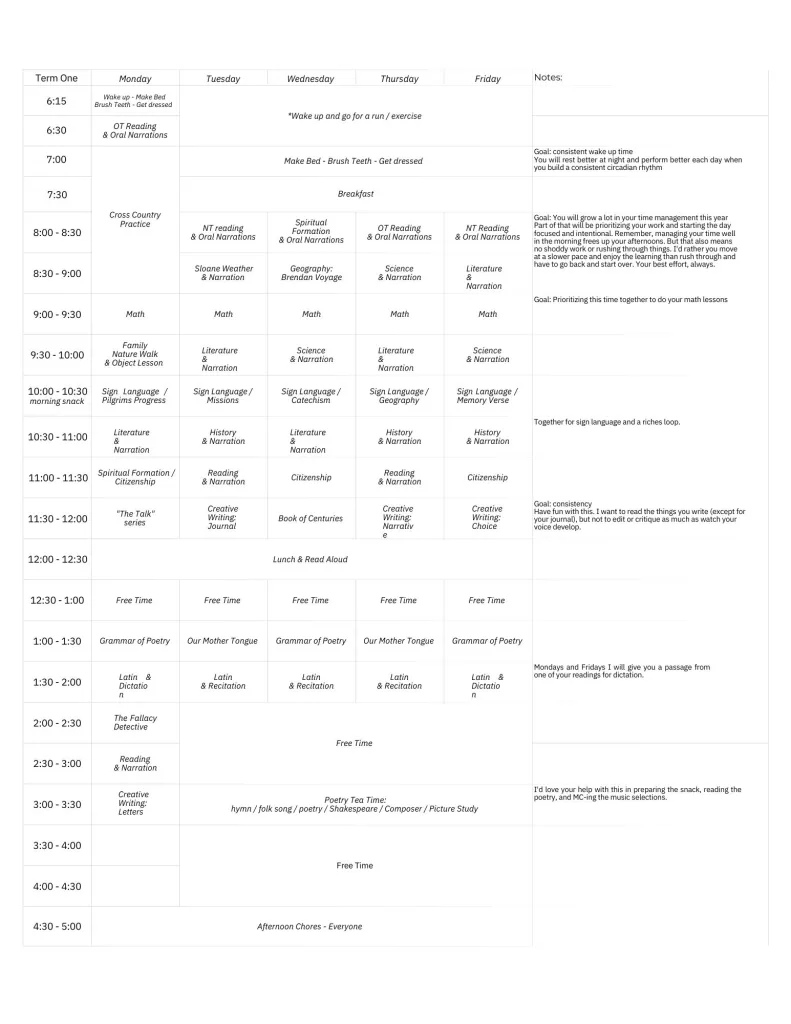
To follow more of how this plays out in our everyday life, follow me at These Full Hands.
Are you ready to create your own Charlotte Mason Schedule now?
Remember that life has its seasons and unpredictability. There is a tension you have to find between working the schedule and flexibility. Do not let it make you anxious. Often times the training of following a schedule IS the lesson for a season. Especially in the early years or if you are just transitioning to a Charlotte Mason education. Let the Holy Spirit be your guide.
But seek first the kingdom of God and his righteousness, and all these things will be added to you. “Therefore do not be anxious about tomorrow, for tomorrow will be anxious for itself. Sufficient for the day is its own trouble.
Matthew 6:33-34
What are you looking forward to most in your upcoming homeschool year? Leave a comment below!
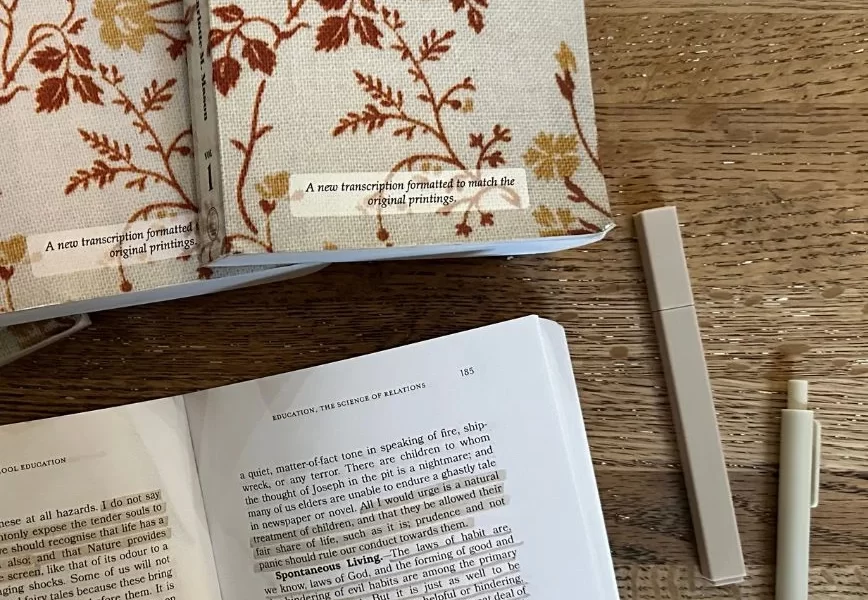



Leave a Reply